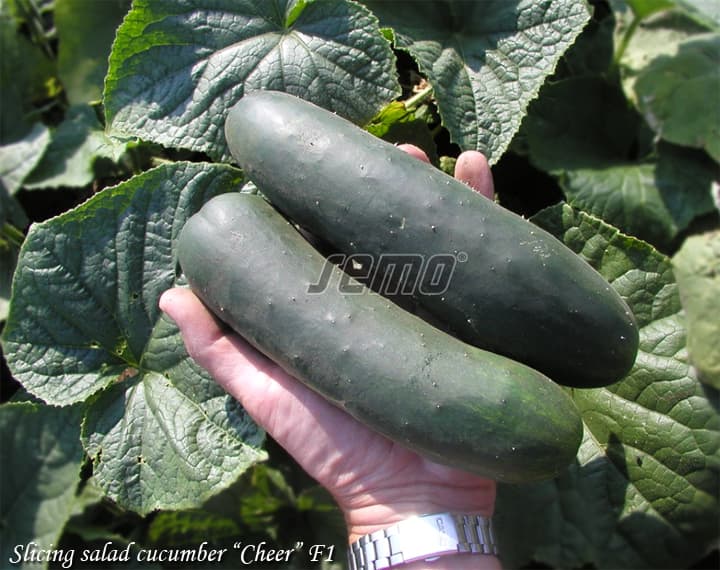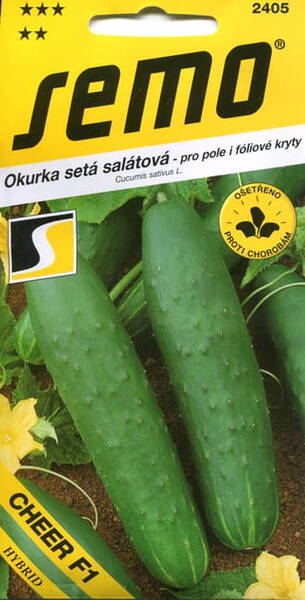A long-fruited hybrid of bee-pollinated cucumber of the American type, providing early and friendly harvest.
The plant is vigorous. The fruits are very dense, smooth, shiny, dark green in color, 20-22 cm long (weighing 340-390 g).
The fruits tolerate transportation well and can be stored for a long time after harvesting.
The hybrid is resistant to cucumber mosaic virus, cladosporiosis, and downy mildew.
The main advantage of the hybrid is its high level of resistance to damage by insects, which allows one to achieve better results when grown in open ground.

An early American slicing cucumber (High Mark II type) that is exceptionally quick to reach first harvest. The shiny dark green fruit have a firm skin, making them resistant to insect damage and suitable for storage. Very good for outdoor field production. Recommended also for summer sowings.
* Is it possible to grow tomatoes and cucumbers in the same greenhouse?
Despite the fact that many people do exactly this (not everyone has space on their site for several greenhouses), this is wrong. Cucumbers and tomatoes have completely different requirements for living conditions.
Cucumbers love the “greenhouse effect” - almost 100% humidity, no drafts or sudden temperature fluctuations.
Dry, hot greenhouses with moderate air humidity are optimal for tomatoes, so ventilation is recommended on sunny days, and transoms are left open even at night. When the air humidity is high, the pollen of tomatoes sticks together, the process of pollination of the ovaries becomes difficult, which affects the yield. In addition, excessive humidity contributes to outbreaks of fungal and bacterial diseases. If the environment turns out to be suitable for tomatoes, then the cucumbers will suffer from dry air and soil - there will be no ovaries, and spider mites will appear.
Along with cucumbers, you can grow lettuce, dill, and Chinese cabbage in a greenhouse. And add sweet peppers, eggplants, and basil to the tomatoes.












